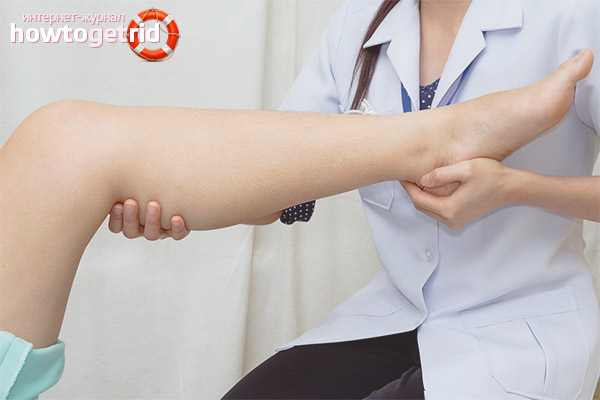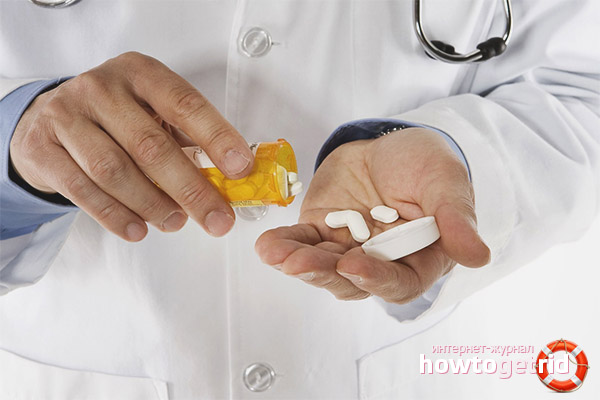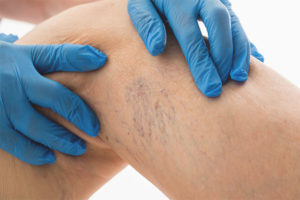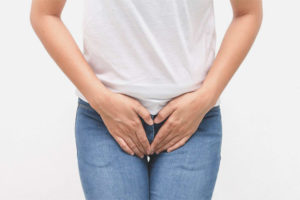The content of the article
If the baby can not be born naturally, the question arises about the operation of Caesarean section. Surgical intervention is necessary when there is no other way to save the life and health of the mother and the child. During the operation, an incision is made on the uterus, through which the fetus is removed. This is a serious abdominal operation, after which complications may occur.
The frequency of postpartum complications in the case of surgery increases several times. Almost every third woman after cesarean section has deviations in her health - the consequences of infection, blood loss, disruption of the intestines, swelling of the legs.
Danger of edema resulting from cesarean section
In the last trimester of pregnancy, almost all women experience swelling of the limbs. After the birth of the baby, all excess fluid from the body should exit, and the edema should disappear. During surgery, anesthesia affects the lumbar and lower extremities. Blood supply is disturbed, swelling occurs. Within a few days after the operation, the edema should disappear. If swelling does not decrease, this may be a signal of the presence of a pathological process.
Puffiness indicates problems in the following organs:
- kidney, bladder;
- thyroid gland;
- of cardio-vascular system;
- vessels of the lower extremities.
It is impossible to ignore these symptoms, a woman needs to seek the advice of a specialist. The presence of severe swelling is noticeable to the naked eye. To identify hidden edema, push your finger on the shin in front, in a place where there are no muscles. If after pressing there is a fossa that does not disappear immediately, this indicates the presence of latent edema. They are most pronounced by the end of the day, especially if the woman spent a lot of time on her legs.
Hazardous signs:
- the presence of puffiness more than 5-7 days after childbirth;
- proliferation of edema;
- swelling, soreness;
- heartache;
- rare urination;
- increase in body temperature;
- asymmetry of limbs.
In this situation, only the doctor can make the correct diagnosis and prescribe the necessary treatment.
Causes of occurrence
The most common cause of edema after cesarean section is the disease that existed during the third trimester. If a woman had severe edema before childbirth, it may take a fairly long period of time to completely disappear.
Other reasons:
- Incomplete uterine contraction. Immediately after cesarean section, the uterus does not contract completely, continues to compress the lymphatic vessels and veins. This leads to difficulty in the outflow of blood and lymph.
- After surgery for several days, a woman observes almost complete bed rest, because of this, the outflow of lymph and blood deteriorates. To improve it, it is necessary to do simple exercises for the legs in the first day after the operation - rotate in the feet, bend the legs in the knees.
- Thrombosis. During pregnancy, blood clotting increases, this is necessary for the body to prevent blood loss during childbirth. Blood clot formation may result from anesthesia. All this leads to venous thrombosis.
- Varicose veins. With varicose veins, the elasticity of the vessels decreases, the veins expand. Blood in the veins and arteries stagnates, outflow of blood and lymph is difficult.This leads to swelling. Caesarean section may aggravate the situation.
- Problems in the endocrine system, causing violations of water-salt metabolism.
- Pathology of the kidneys.
- Chronic heart failure, which is often accompanied by the occurrence of swelling.
- Cold.
- Autoimmune disorders can trigger blood clots.
- Protein deficiency that interferes with the normal absorption of fluids.
Drug treatment
Only a doctor can prescribe the correct treatment to remove edema after cesarean section. He will pick up drugs that will not pass into the baby’s breast milk. Edema is only a symptom, so it is necessary to treat the underlying disease.
Medicines for the treatment of puffiness after cesarean section
- Kanefron, Spazmotsistenal, Furosemide, Amiloride - diuretics, diuretics that help to remove excess fluid from the body.
- Lyoton (analogues - “Hepatrombin”, “Ellon”, “Heparin ointment”), Essaven, Troxevasin-gel - means for external use, helping to strengthen the walls of blood vessels.
- Voltaren, Diclofenac, Movalis - anti-inflammatory drugs for oral, rectal, external use (tablets, suppositories, ointments).
- Fenindion, Warfarin - drugs that restore the normal level of blood coagulability.
- Detralex, Venoruton-300, Phlebodia, Antistax, Anaverol - capillary-stabilizing agents in the form of drops or tablets (used with caution, often prescribed only if the woman does not breast-feed).
The use of medications has an effective effect, a few days are enough for the edema to completely disappear. In parallel with these medicines, you need to take vitamin complexes.
Folk remedies
Many women are afraid to use drugs, since the active substance can penetrate into breast milk and have a harmful effect on the health of the baby.
You can use the tips of traditional medicine:
- Contrast baths help reduce swelling. Hold your feet alternately in hot and cool water for 1-2 minutes. To enhance the effect, add sea salt, a decoction of herbs.
- It relieves swelling of the bath well, for the preparation of which in a liter of warm water dilute 10 g of baking soda and mustard and 100 g of salt. Keep your feet in the solution for 10-15 minutes. Remember, the water should have a comfortable temperature, not be too hot or cold.
- After the bath, do a foot massage. Gently massage your feet, legs, hips.
- The outflow of liquid will help the reception of flax or mint infusion.
Compression underwear
Elastic knitwear provides uniform pressure on the limbs along the entire length. The activity of the venous and lymphatic systems is normalized, swelling decreases, and the sensation of pain and heaviness decreases. Compression underwear provides a tightening effect, it gently supports the venous walls, facilitating the rise of blood to the heart. The movement of lymph is normalized, blood flow in the legs improves, swelling decreases. Depending on your symptoms, you can buy socks, stockings or tights. You can also use elastic bandages.
Edema Exercises
To reduce the appearance of puffiness, more often give rest to the legs. Whenever possible, lie down by placing a roller under the feet. If you have to sit for a long time, lay your feet on a raised platform, in no case do not lay your feet on your feet. In the supine position, make rotational movements of the feet in different directions. Use for treatment every minute when you stand, from time to time rise on socks. Thus, you disperse blood, increase pressure in the venous vessels. Do not forget that during the exercise, the load should fall only on the legs, and in no case on the abdominal muscles.
Nutrition
To reduce edema after cesarean section, you need to review your diet. Remove food containing a lot of salt from it, as table salt traps fluid in the tissues. Do not eat canned foods, sausages, smoked meats, salted fish. Feel free to include in your menu juicy vegetables and fruits, juices, fruit drinks, compotes. Of course, we must not forget about the ability of some products to cause allergies in the baby (citrus fruits, vegetables and red fruits). Limit the use of strong tea and coffee, cocoa, carbonated drinks.
Follow the doctor's recommendations, take vitamins, give enough time to rest. Puffiness that occurs after cesarean section usually disappears within a few weeks.
Video: features of recovery after cesarean section











Submit